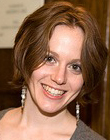Monday, July 21, 2014
 By Naomi Sobel, donor engagement coordinator for the Astraea Lesbian Foundation for Justice.
By Naomi Sobel, donor engagement coordinator for the Astraea Lesbian Foundation for Justice.On May 7, Janet Mock told Philanthropy New York’s 35th Annual Meeting guests that trans women of color live at the intersection of “pass-her-by and pay-her-no-mind.” She challenged us as a society to acknowledge that trans women are women and that black and brown bodies matter.
Funding statistics echo this portrayal of the LGBT community, especially for LGBT individuals of color. A study of foundation giving by Funders for LGBTQ Issues in 2012 shows that “for every 100 dollars awarded by U.S. foundations only 24 cents goes to LGBTQ issues.” These scant resources are scattered among many community efforts. Of that that 24 cents per 100 dollars, only two percent goes to community organizing work, and one percent goes to work in communities of color.
As a result, most of the nominal philanthropic dollars available to LGBTQ groups are going to organizations with large staff and budgets. While some LGBT issues are being lifted up, other more marginalized topics—racial and economic justice, LGBT immigrant rights, youth of color leadership—aren’t given a chance to succeed. Nonetheless, those unfinanced volunteer-led grassroots groups are in no way deterred from pushing the margins of conversation; considering the LB and T in LGBT and expanding it to include Q and I; and creating nuanced dialog that does not forget economic, racial, and gender justice within LGBTQ rights.
As a philanthropic activist, I’ve long thought about what it would take to fill these funding gaps and support grassroots leadership. While at a retreat for young people with wealth that had a substantial LGBTQ population, many in attendance noted that there was nothing queer-specific on the agenda. At dinner one night, I put out a call for a conversation about funding LGBTQ racial and economic justice work, wondering if anyone would join me; it turned out there was so much interest that we had to pull up a second table. We talked about the gaps in foundation funding, which frustrate so many of us. Jason Franklin, Executive Director of Bolder Giving, reminded those of us at the table of something few LGBTQ people realize—only 5 percent of us give to the LGBTQ organizations that serve our community. We started talking about where we do and don’t give, and how even those of us who had thought seriously about directing funds to LGBTQ organizations often didn’t know where to start beyond the largest national groups.
Out of that conversation came an e-mail list, and a series of phone calls, and, eventually, a model and name for an LGBTQ philanthropic giving circle: Funding Queerly. Ten young LGBTQ people made significant gifts to our new giving circle – at very different levels depending upon each individual’s financial means. We each also committed to fundraising for the circle. Funding Queerly partnered with Astraea Lesbian Foundation for Justice, which has been supporting small LGBTQ grassroots groups since 1977 in the United States and abroad. A leader in shifting the philanthropic landscape, Astraea put out a request for proposals from small LGBTQ groups doing community organizing work by and for low-income communities, communities of color, and rural communities here in the U.S.
We got 49 proposals and awarded twelve $10,000 grants to support groups across the country. One grant to Providence Youth Student Movement (PrYSM) in Rhode Island will help Southeast Asian youth organizers to lead campaigns to confront and end state, street, and interpersonal violence affecting their communities. Another grant to Gender Expansion Project (GEP) will bolster increased access to care, treatment, and acceptance of transgender, transsexual, intersex, and gender diverse individuals in Montana and neighboring states.
The members of Funding Queerly are thrilled about the $120,000 in grants we were able to make, but it’s clear this is just a drop in the bucket. If we want to win LGBTQ rights and justice for all of us, we need to ignite organizations that are including and meeting the needs of all our communities.
How can we urge foundations to support small and emerging LGBTQ organizations? How can we shift giving so that groups receive larger grants? And, given the gaps of wealth within LGBTQ communities in this country, what cultural change needs to happen? We can’t survive as a whole if some parts of our community have access to wealth and representation, while others remain invisible, continuing to fight tooth and nail with little financial support.
As the organizers in Funding Queerly think about our future work, we remain deeply aware of the radically different world we would be in if individuals across the country began to support those underdog groups doing the front-line work for full, lived equality. We challenge the philanthropic community to join us in closing the queer funding gap.
